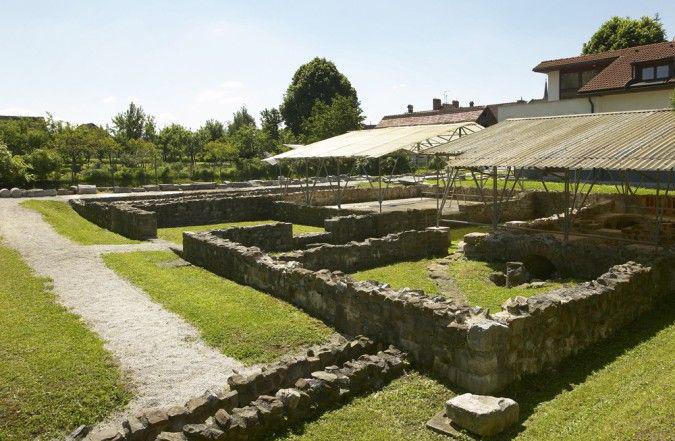
It turned out to be a bronze statue of a man in a toga dating back to the early 2nd century A.D., when Ljubljana was still the Roman city of Aemona.
The workers had made a rare discovery: Most bronze statues from the Roman era had been melted over the years because of the high price of bronze. Protected under the surface, the statue found in Ljubljana survived untouched. Dubbed “The Citizen of Aemona,” it eventually became a symbol of Roman Ljubljana.
Centuries before the workers made their discovery, Aemona was a bustling town built on several trade routes. According to legend, it was founded by Jason and the Argonauts. From its beginnings as a military outpost, it grew into a town inhabited by all social classes from various parts of the Roman Empire, ranging from the elite – mostly consisting of people born on the Apennine peninsula – to slaves. As the Roman Empire began to decline, Aemona faced increasing invasions from the north, and by the early Middle Ages, the town was abandoned.
The ruins of ancient Aemona, however, stayed behind. Large parts of the ancient town wall survive to this day, and crews working on major construction projects frequently find priceless Roman artifacts – which require the cessation of all work while archeologists are called in to examine the site. Other evidence of Ljubljana’s Roman history is less obvious: In many places, the city’s street plan was built on top of the street plan of the Roman Aemona, and would have been very familiar to the nameless citizen who was immortalized as the bronze statue.
The original Citizen of Aemona is now on display in the Slovenian National Museum, while a replica stands in Ljubljana's Zvezda Park. To the residents of Slovenia's capital, it has become a symbol of Ljubljana and the city's long history as a strategic site at the crossroads of Europe.
Jaka Bartolj


































































